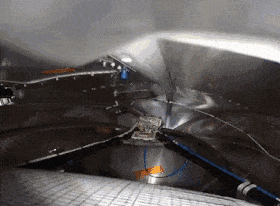The American company Astra unsuccessfully launched a light rocket with five student cubesats. After turning off the engine of the first stage, the head fairing did not have time to open and the second stage crashed into it, and then, when it did open, it spun. The launch was broadcast on the NASASpaceflight YouTube channel.
Astra is one of the developers of light rockets for launching small satellites into low Earth orbit. The rocket, which is called Rocket 3, has a classic two-stage design with kerosene liquid engines, and is capable of carrying cargo weighing up to 150 kilograms into orbit up to 500 kilometers high. The main difference from other light missiles is that it fits in a standard 40-foot cargo container. Similarly, the company brings mobile ground infrastructure to the launch site. Because of this, Astra claims that it only needs a concrete platform, the presence of an electric grid and a launch permit from the authorities to launch.
The company has already had five attempts to launch a rocket into orbit, and only one of the launches at the end of 2021 was successful, and another rocket collapsed before launch in early 2020. It is noteworthy that each of the accidents happened for different reasons. In September 2020, shortly after launch, the trajectory planning and retention system failed, so the engines were remotely turned off. In December of the same year, the rocket crossed the Pocket line for the first time and reached an altitude of 390 kilometers, but due to incorrect selection of the fuel mixture, it gained a speed of 0.5 kilometers per second less than necessary to enter orbit. In August 2021, one of the rocket's five engines shut down right at the launch. Despite this, she continued to fly sideways and even climbed several tens of kilometers.
During the new launch, Astra launched a rocket for the first time not from Alaska, but from the Cape Canaveral cosmodrome. The rocket was supposed to launch five cubesats developed by students as part of the ELaNa program. Initially, the flight took place normally: the first stage correctly worked out the entire program and turned off the engines in a timely manner. After this stage, according to the plan, this rocket first separates the head fairing, then the second stage is pushed forward, and after a few seconds it starts its engines. However, on the broadcast you can see that the fairing did not open and the second stage crashed into it. A few seconds later, the engine of the second stage started and it knocked out the fairing flaps, and then immediately spun.
Half a minute after the incident, the company stopped broadcasting video from the rocket, and then announced on Twitter that a problem had arisen as a result of the flight, due to which the satellites would not be put into orbit.
In the fall, Firefly Aerospace tried to launch its light rocket for the first time. Shortly after takeoff, the rocket exploded and the entire payload was lost.
Grigory Kopiev

